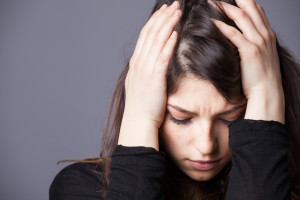 Autumn is in full swing and that means cooler temps, falling leaves and shorter days are upon us. As the season begins to progress and we see even more changes, some of us may begin to feel the ‘blues’ because we are spending less time outdoors, which means we aren’t soaking in as much vitamin D from the sun and that can affect us in a few different ways. Our emotions may change but when it gets to the point where we are feeling depressed it could be due to Seasonal Affective Disorder.
Autumn is in full swing and that means cooler temps, falling leaves and shorter days are upon us. As the season begins to progress and we see even more changes, some of us may begin to feel the ‘blues’ because we are spending less time outdoors, which means we aren’t soaking in as much vitamin D from the sun and that can affect us in a few different ways. Our emotions may change but when it gets to the point where we are feeling depressed it could be due to Seasonal Affective Disorder.
Seasonal Affective Disorder is something that is more common than you think and its onset typically begins between the months of September through November and continues until the spring time. It’s a type of depression that’s related to the changes in season and as temporary as those are, SAD can sometimes last longer than a few seasons. Some individual start to experience symptoms where their moods are a little off course from their norm. They may have a lack of energy for daily tasks, have problems concentrating, sleep problems and may feel sad, hopeless or low. It can continue with being irritable around others, having panic or anxiety attacks and they may even turn to drug or alcohol abuse.
What Causes SAD?
While the exact causes of SAD are unclear, there are many theories as to why it happens. One theory involves light and when the season transitions into the fall and winter, we typically are exposed to less amounts of sunlight. When light travels through the back of the retina, messages are sent to the brain that regulates things like sleep, mood, appetite and sex drive. If there is a lack of light, these functions may change, which disrupts the way an individual functions.
Another theory points at low levels of serotonin which is a chemical in the brain. People who suffer from depression generally have lower levels of serotonin and if the brain’s system isn’t absorbing enough serotonin, it could disrupt mood. Additionally, SAD could occur due to a disrupted circadian rhythm and that’s your body’s internal clock. It’s responsible for keeping your body on a sleep/wake cycle and if the season brings about less sunlight, it could disrupt the circadian rhythm.
How To Treat SAD
There are a couple of different ways to treat this type of depression and one viable option could be speaking with a psychotherapist like Stuart MacFarlane a Jungian analyst who uses open discussion treatment methods that help the individual talk through their issues. This can help someone discuss what’s bothering them and to gather resources from within. Another treatment method includes taking in as much natural light as possible or using a light box while indoors. This exposure of natural light can help alleviate the symptoms. However, if you are feeling a little down and have noticed your feelings changing as the season changes, you may want to speak with a psychologist to discuss it further.